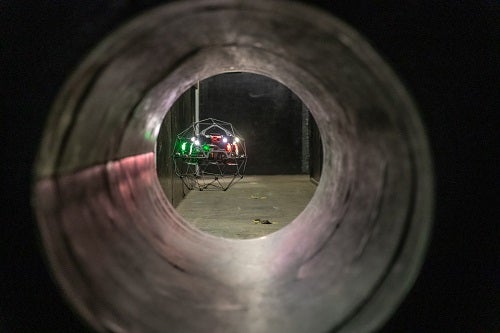Drone technology can be used to survey pipelines – and in recent months there has been a lot of media coverage about how this technology could be used to uncover thousands of pipelines located in the UK. In this article, we explore when drones can be used and what needs to be considered when using drones to survey pipelines.
Why do pipelines need to be inspected?
Maintaining pipe networks is a huge challenge and regular routine inspections are essential to check the condition of the assets. The inspections check the integrity of the asset, joints and junctions, thickness of the pipework, incoming feed to the main pipe, any inward and outward leakage of liquid, any build-up of materials or foreign objects, amongst others.
How can drones improve the safety of pipeline inspections?
Until drones, a pipeline inspection would normally involve a team entering pipelines and carrying out a manual inspection. They would invariably have to carry a lot of cumbersome equipment and could encounter areas that could be difficult to access, meaning human entry becomes hazardous. There may be risks from gases, fluctuating water depths, varying tunnel depths, diameters and distances, along with different structural conditions.
Internal drone inspections can reduce the risks, and the potential for accidents, of inspecting pipelines. With internal drone technology – there is often no need for people to enter pipelines or spend time in confined spaces inside of pipelines.

What to consider when planning a drone pipeline inspection
Drones do reduce risk as human entry is not necessary – in fact, many pipes are too small for a person to enter but big enough for a drone. It is vital that a full risk assessment is completed prior to any work, and this must include a retrieval strategy for the drone should it become stuck. Other factors to consider before a drone can be deployed inside pipework include:
Obstacles
Most pipework is not laid in long straight lines and so it is important to understand as much as possible before any drone flight, if there are any likely obstacles in the way of the drone that it could get caught on. This could include materials that have become dislodged from the pipe itself, fallen into the pipe from above, or travelled through the pipe.
Physical dimensions and layouts of pipework
The maximum distance a drone can fly with a range extender in use, is approximately 200m – in a straight line. This reduces to around 160m without a range extender and reduces further when the pipework is not straight. Often pipes have uplifts or bends and these reduce distance a drone can travel.
Presence of liquid
Drones do not like liquid and cannot fly very close to liquid. What’s more, if the pipe is very narrow, the down draft created by the drone can blow the liquid up the side of the pipe and cause the drone to lose power and malfunction.

Flammable substances and dust
It is important to understand what material has travelled through the pipe in the past that could cause issues for the drone’s flight. If any flammable substances have been in contact with the pipe in the past, the pipe must have been cleaned thoroughly and relevant testing carried out before any drone is flown in the space.
ATEX
The drone is not ATEX rated so this does rule out operating it in some environments. The drone has a battery and propellors that create static energy. However, a risk assessment and method statement with appropriate control measures in place, may allow the drone to operate in an ATEX rated area.
Our drone inspection services
The industrial confined space drones MRS Training & Rescue use are flown by trained pilots and use positional sensors to navigate through structures such as pipework. Unlike traditional drones, these drones do not use GPS to accurately position and give data.
Instead, as we fly, the drone captures the journey, through the pipe for example, and the customer can view a live stream as the flight happens. This allows the customer to identify any anomalies and then, by flying the drone through that part of the pipe again, the customer can view a close-up inspection in real time for each issue identified. Close up photographs can be taken, and a full report produced, in which precise measurements of the fault can be included.
The drone uses pix 4D software and during the inspection, the camera on the drone takes thousands of photos throughout the journey – known as point clouds. These can all then be ‘sewn’ together in the report created and a 3D model of the pipe itself generated, that includes any measurements necessary. We can also share the footage of the flight video with the customer. Following the flight and report, further decisions can be taken as to any actions required to repair the pipework.
To learn more about the types of drone inspections we offer and the industry we work with, contact us.




